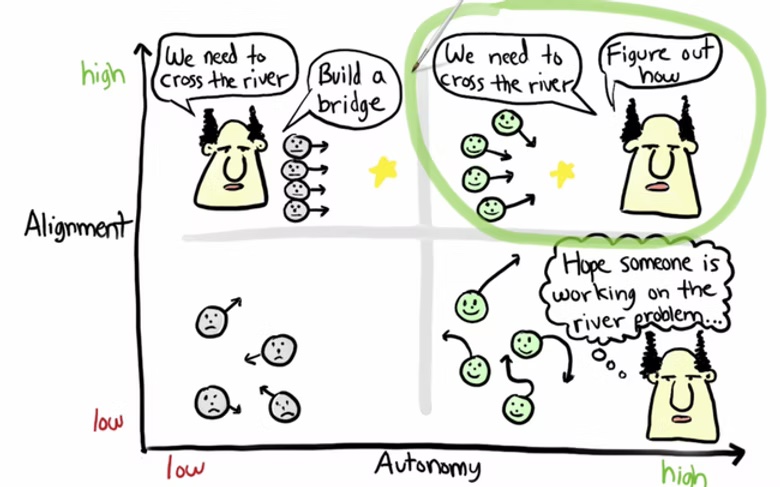
What is Aligned Autonomy?
“Aligned Autonomy” (inspired by the Spotify model) means giving teams freedom to decide how they work, while making sure everyone moves in the same direction. It's not either/or — we need both to scale effectively.
Spotify helped popularize this idea, especially through Henrik Kniberg’s famous matrix showing autonomy (freedom) on one axis and alignment (shared purpose) on the other. High-performing organizations aim for the top-right corner: high alignment and high autonomy.
Why Alignment Matters
Alignment means shared goals. Think of it as "everyone rowing in the same direction." But this doesn’t happen by itself — leadership must clearly communicate purpose, strategy, and priorities.
You can't expect teams to self-organize if they're micromanaged. Leaders must set clear boundaries and let teams operate within them.
Why Autonomy Matters
Autonomy is the team’s ability to make decisions and move fast. Without it, delivery slows down. Most teams operate at a basic level of autonomy: they can execute tasks and manage their own work. But true self-organization goes further — teams design their own setup and solve problems together.
Richard Hackman, provides a powerful illustration of the options. This version is from the less.works website describing team types:
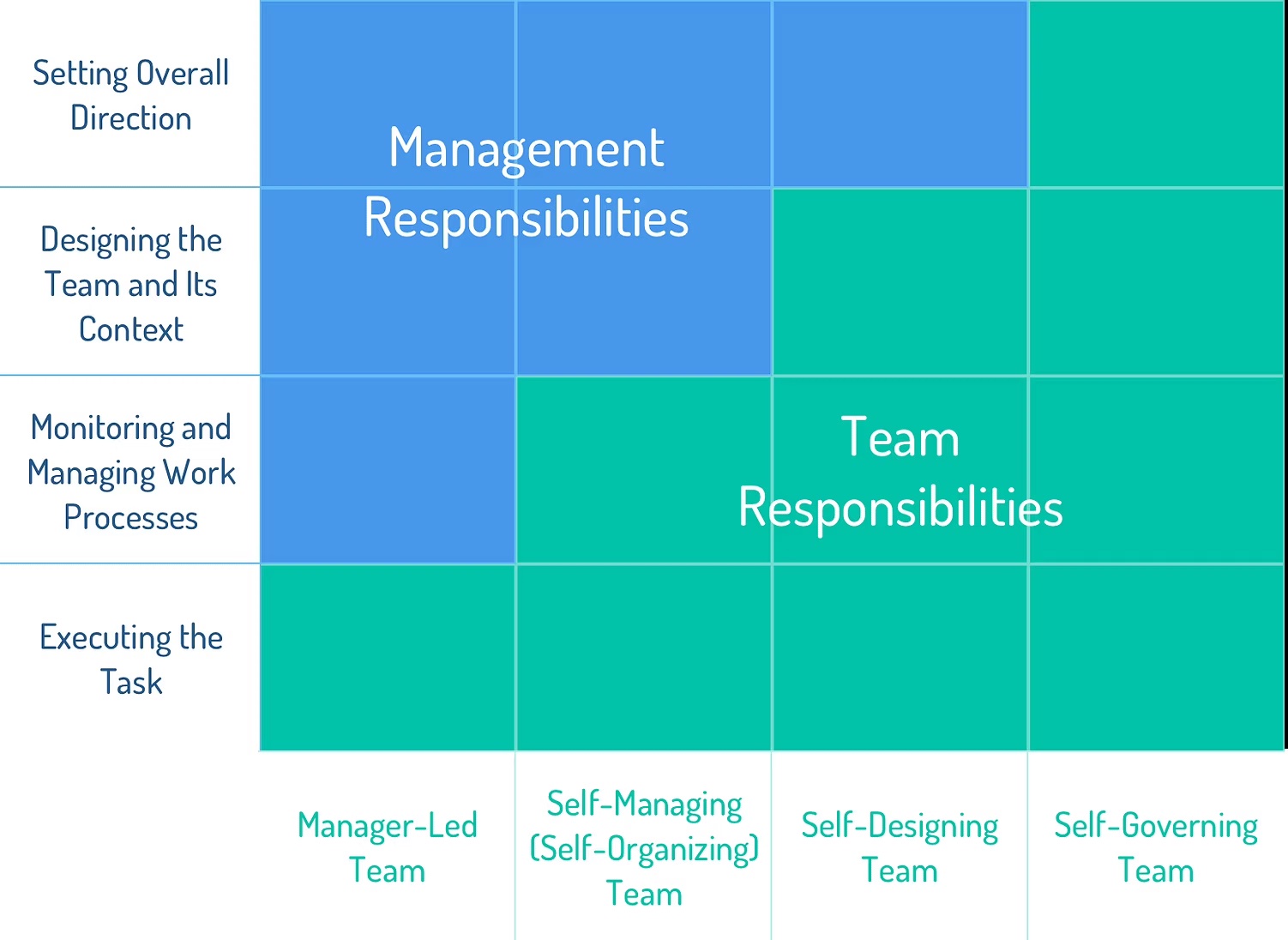
Designing Autonomy at Scale
In large organizations, a single team’s speed is not enough. What matters is how multiple teams deliver together.
Example: Merging analysts, testers, and front-end devs into one cross-functional team (e.g., "CAPS-2") reduces handovers and boosts delivery speed. If you desire to learn more about te Org Topologies thinking tool, you can download a comprehensive summary here.
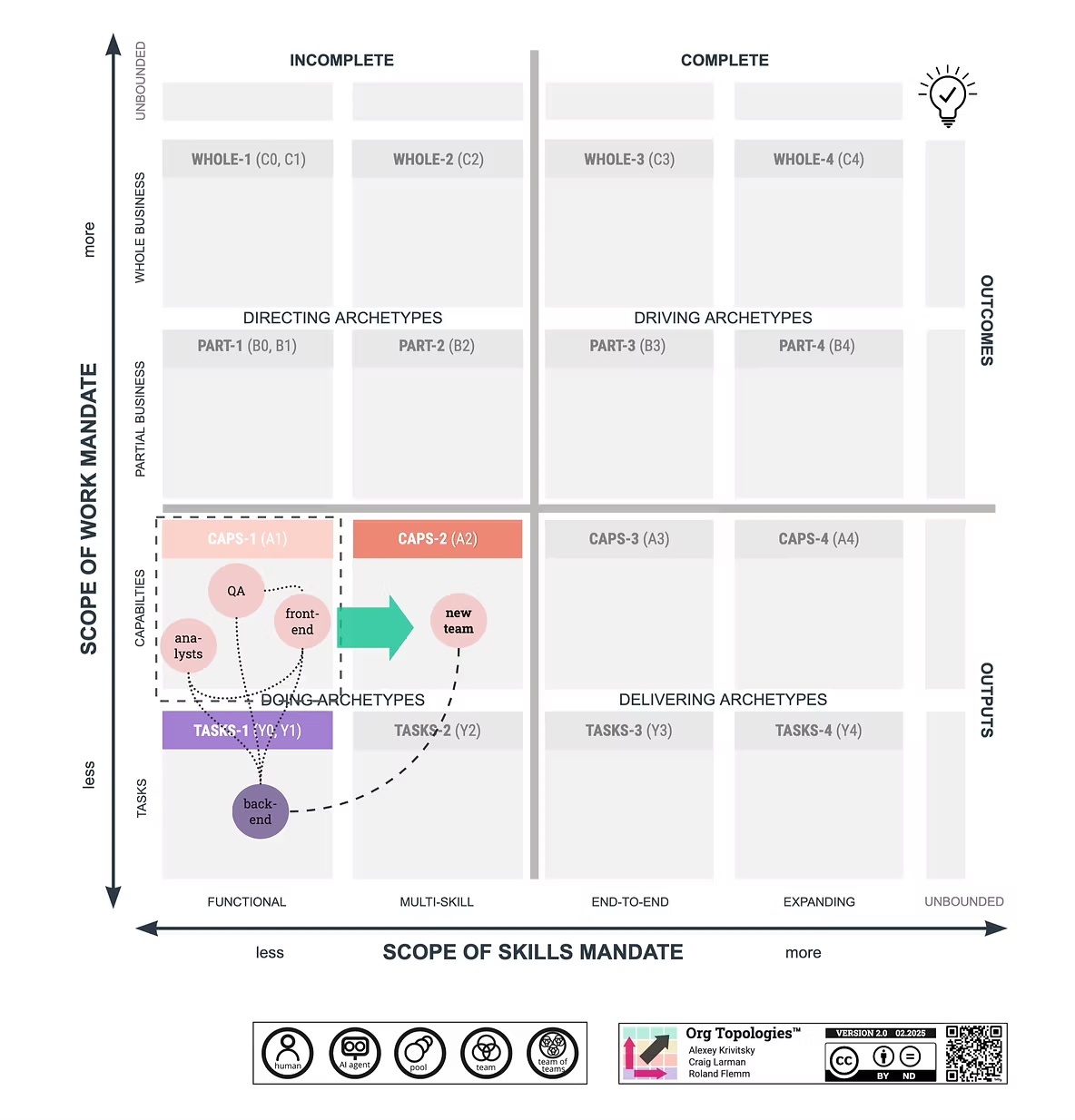
Designing Alignment at Scale
Alignment isn't just big plans and dependency maps. Those may look good on paper but don’t foster real collaboration. Instead of top-down coordination, let teams collaborate directly. This leads to stronger ownership and faster results.
From Overlap to Collaboration
Traditionally, we avoid overlapping responsibilities. But shared work areas create chances for joint problem-solving. Teams working on broader business challenges need to collaborate deeply, not just align on tasks.
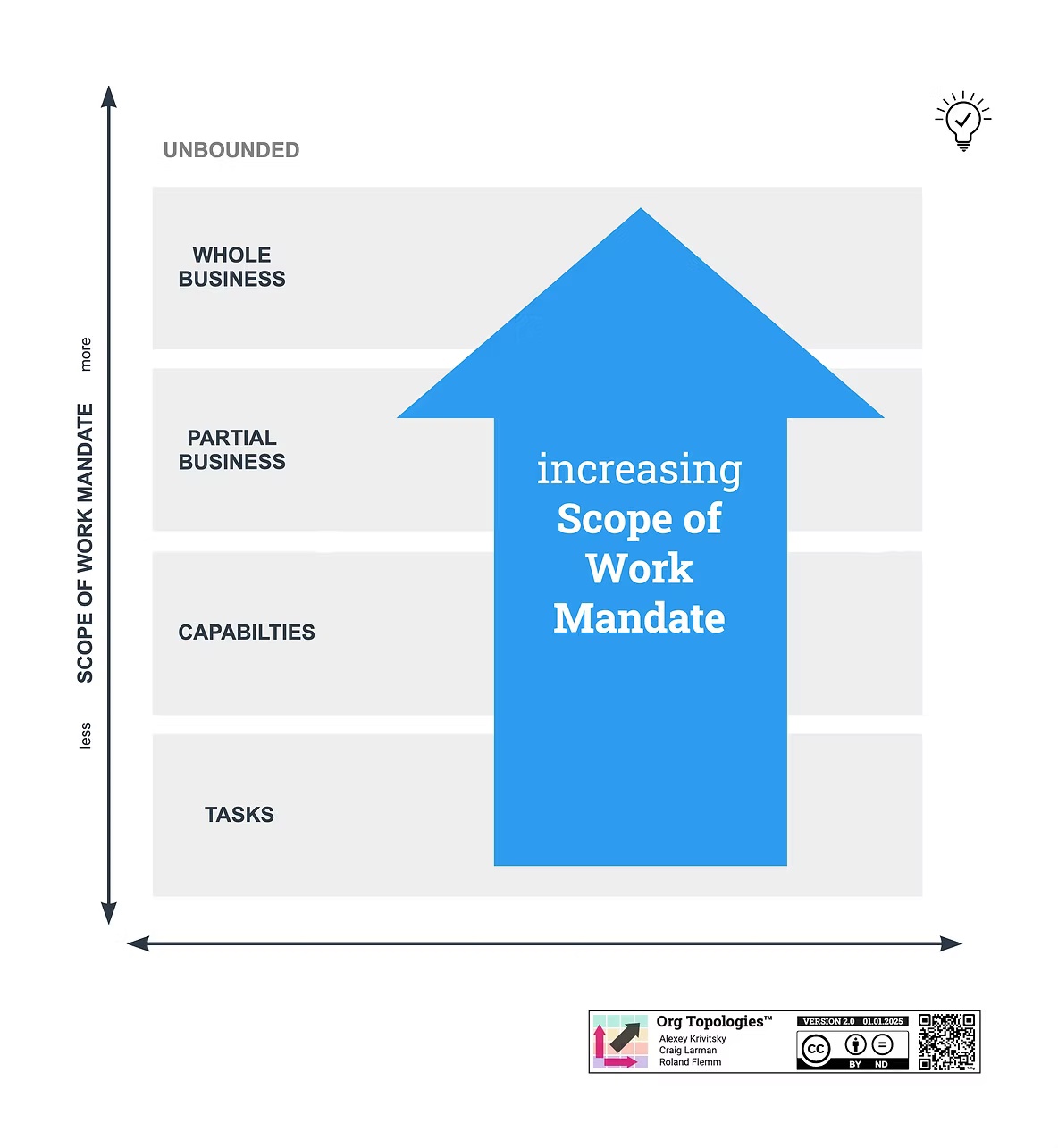
Building a Team of Teams
Spotify created many cross-team structures: joint planning, shared reviews, and ongoing syncs. Over time, these practices grew into a "team of teams" — each one aligned around business domains like Retail or Business Banking.

This design supports both autonomy and alignment. Teams stay connected to strategy and customer value, while owning their delivery as a group effort. This requires multi-learning. An important strategy for organizations to survive in the age of AI.
Final Thoughts
True aligned autonomy at scale isn't about perfect org charts — it's about designing for collaboration. Move toward teams that:
Share goals and vision
Own a wide scope of work
Have the skills to deliver end-to-end
Coordinate through collaboration, not just plans
You don’t have to get there all at once. Use this as your “north star.” Take small steps — and let practices like Elevating Katas™ guide the way.
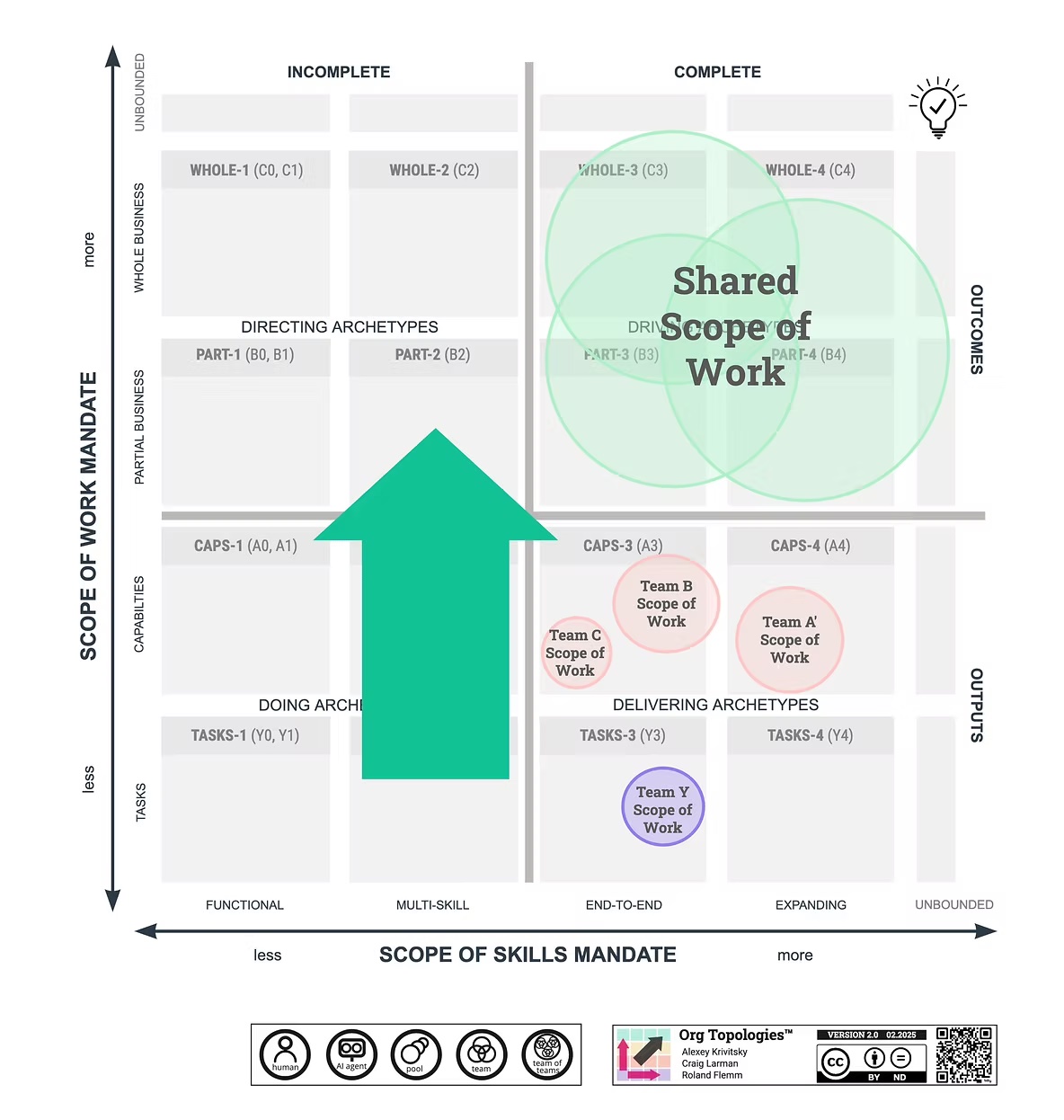
For a more elaborate version on this subject click here: Aligned Atuonomy at Scale.
Or read details on the MADE method, for creating organizations that are fit for purpose.

